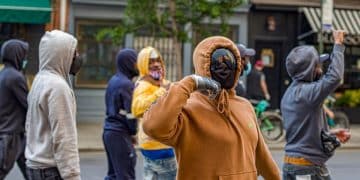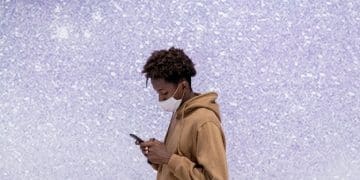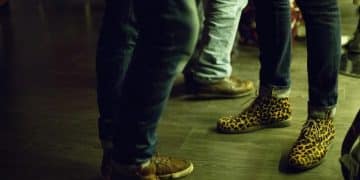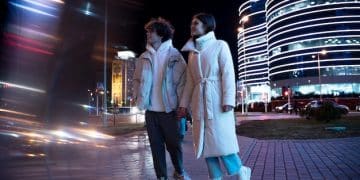Hip Hop Dance Crews: $50k+ from Brand Partnerships
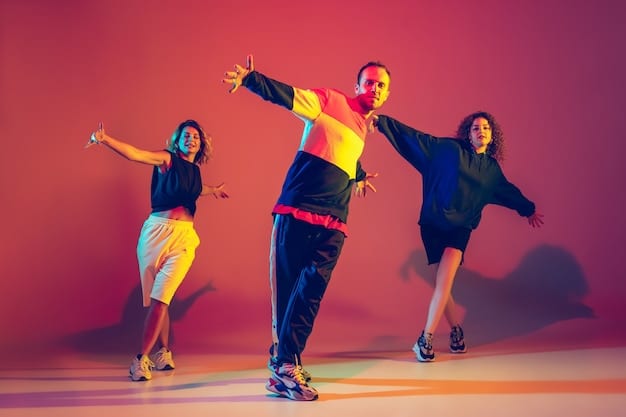
Through strategic brand collaborations and innovative digital engagement, hip hop dance crews are increasingly transcending traditional performance boundaries, securing collaborations that generate annual incomes exceeding $50,000 and establishing a sustainable professional pathway within the entertainment industry.
In the dynamic world of entertainment, a quiet revolution is underway, redefining what it means to be a professional dancer. Far beyond the battle grounds and underground cyphers, hip hop dance crews are establishing themselves as formidable entities in the corporate landscape, with many now reporting annual earnings upwards of $50,000 solely through strategic brand partnerships. This remarkable shift highlights a burgeoning economy where artistic expression converges with savvy business acumen, fundamentally altering the trajectory for countless talented individuals in the hip hop dance community. The once elusive dream of financial stability through dance is rapidly becoming a tangible reality, illustrating a powerful evolution in how artistic endeavors are valued and monetized in the digital age. This article will delve into the mechanisms behind this transformation, exploring the strategies, challenges, and immense opportunities that enable these crews to break traditional barriers and carve out prosperous careers.
The Evolution of Hip Hop Dance as a Commercial Force
Hip hop dance, born from street art and cultural expression, has undergone a significant transformation. What began as an underground movement, characterized by raw talent and competitive battles, has matured into a global phenomenon. This evolution has paved the way for professionalization, with crews moving beyond local recognition to secure international acclaim and, crucially, financial viability. The shift from informal gatherings to structured crews marks a pivotal moment, laying the groundwork for commercial endeavors.
Understanding this trajectory requires appreciating the inherent adaptability and magnetic appeal of hip hop dance. Its energetic nature, combined with its cultural authenticity, makes it a potent medium for brand messaging. Early forays into commercial visibility involved appearances in music videos and live performances for established artists. However, the true turning point arrived with the advent of digital platforms.
Leveraging Digital Platforms for Visibility
The rise of YouTube, Instagram, TikTok, and other social media platforms provided an unprecedented stage for dance crews. No longer limited by geographical constraints or traditional media gatekeepers, crews could directly showcase their talent to a global audience. This direct access fostered organic growth, allowing crews to build dedicated fan bases and accumulate millions of views.
- YouTube Channels: Many crews established dedicated YouTube channels, sharing high-quality performance videos, behind-the-scenes content, and tutorials. This created a consistent content stream.
- Instagram Engagement: Visual platforms like Instagram became crucial for sharing snippets, promoting events, and engaging with followers through stories and live sessions.
- TikTok Virality: TikTok’s short-form video format and algorithmic reach allowed crews to achieve viral status quickly, exposing them to entirely new demographics.
This digital omnipresence didn’t just increase visibility; it monetized it. Views translated into ad revenue, and a large, engaged following became a valuable asset. The raw energy and authenticity that defined hip hop dance resonated strongly with online audiences, creating a fertile ground for brand interest.
Professionalization and Business Acumen
Beyond raw talent, successful crews exhibit strong business acumen. They operate like small enterprises, managing their brand image, negotiating contracts, and understanding market trends. This includes developing a clear mission, defining their unique style, and consistently delivering high-quality content. Building a strong brand identity is as crucial as mastering complex choreography.
Many crews also invest in professional management or representation to navigate the complexities of sponsorships and partnerships. This allows the dancers to focus on their art while experts handle the business side, from legal agreements to financial planning. The transition from passion project to viable business entity is a testament to their dedication and strategic vision.
The journey of hip hop dance from the streets to global commercial viability is a compelling narrative of artistic resilience and strategic adaptation. By embracing digital platforms and cultivating a keen understanding of brand value, these crews have not only elevated their art form but also unlocked significant financial opportunities, fundamentally changing the landscape for professional dancers.
Identifying and Cultivating Brand Partnerships
Securing sustainable brand partnerships is the cornerstone of a hip hop dance crew’s financial success in today’s market. It moves beyond one-off performances or event bookings, creating long-term, mutually beneficial relationships with companies. For brands, associating with dynamic and authentic hip hop dance crews offers a unique pathway to connect with specific demographics, particularly younger, culturally aware audiences.
The process of identifying and cultivating these partnerships is multifaceted, requiring both creative vision and strategic outreach. It begins with a deep understanding of a crew’s own brand identity and target audience, followed by a meticulous search for companies whose values, products, or services align with theirs. Authenticity is paramount; audiences can quickly discern forced or disingenuous collaborations.
Strategic Alignment: More Than Just Money
The most successful brand partnerships are built on shared values and complementary goals. A crew celebrating individuality and athletic performance, for instance, would be a natural fit for sportswear brands, energy drinks, or even tech companies promoting active lifestyles. On the other hand, a crew known for its elegant, interpretive style might appeal to fashion houses or luxury goods. The key is to seek brands that genuinely resonate with the crew’s ethos and audience.
- Understanding Brand Values: Crews should research potential partners to ensure their corporate values align with the crew’s artistic and social messaging.
- Audience Overlap: Look for brands targeting similar demographics. This ensures the sponsored content reaches receptive consumers.
- Product Integration Potential: Consider how a brand’s products or services can be naturally integrated into a performance or content piece, making the partnership feel organic.
This strategic alignment ensures that the partnership feels authentic, adding value to both the crew’s content and the brand’s message, rather than detracting from either. It transforms a simple transaction into a collaborative narrative.
Crafting Compelling Proposals and Outreach
Once potential partners are identified, crews must craft compelling proposals that highlight their unique value proposition. This isn’t just about showcasing dance skills; it’s about demonstrating reach, engagement, professionalism, and the potential ROI for the brand. A comprehensive proposal might include:
Detailed audience demographics and analytics (follower count, engagement rates, geographic distribution). A portfolio of past performances and content examples. Case studies of successful campaigns or viral moments. A clear outline of collaboration ideas, from social media campaigns and product placements to live event activations or branded content series. A professional media kit that encapsulates all relevant information.
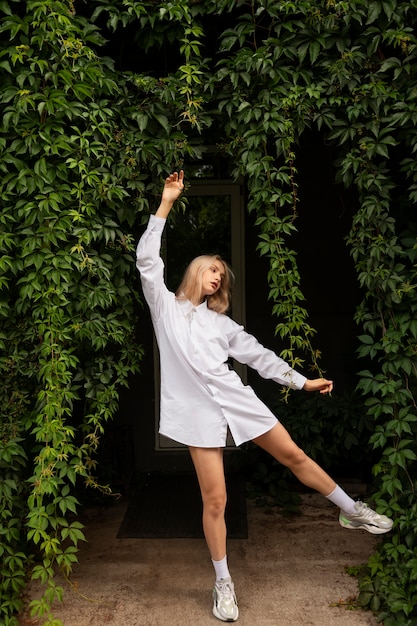
Reaching out to brands requires persistence and a personalized approach. While direct emails to marketing departments or agencies are common, networking at industry events and leveraging existing connections can also be highly effective. The initial contact should be concise, professional, and pique the brand’s interest enough to warrant a deeper conversation. Follow-ups are crucial, but always respectful of the brand’s time.
Cultivating these relationships extends beyond signing a contract. It involves consistent communication, mutual respect, and a commitment to delivering high-quality results. Brands are looking for reliable, creative partners who can consistently elevate their message. By focusing on authenticity, strategic alignment, and professional execution, hip hop dance crews can build a robust portfolio of brand partnerships that provide sustained financial growth and expand their artistic reach.
Navigating the Business of Dance: Contracts, IP, and Management
The journey from artistic passion to profitable enterprise involves a deep dive into the practicalities of business. For hip hop dance crews turning their talent into a steady income stream, understanding the nuances of contracts, intellectual property (IP), and effective management is paramount. These elements collectively form the framework that protects their interests, ensures fair compensation, and allows for sustained growth.
Many dance crews, initially focused solely on their craft, quickly realize that success in the commercial realm demands a sharp business mind or, at the very least, trustworthy professional guidance. The dance world, like any other creative industry, has its complexities, and without proper navigation, crews can leave significant money on the table or, worse, face legal complications.
Contractual Agreements: Ensuring Fair Play
Every brand partnership, performance booking, or media appearance should be underpinned by a clear and comprehensive contract. This document protects both the dance crew and the partnering entity. Key elements typically found in such contracts include:
- Scope of Work: Clearly defining what services the crew will provide, including number of performances, specific content pieces, social media posts, and deadlines.
- Compensation: Specifying payment terms, amounts, and schedule. This might involve fixed fees, royalties, profit-sharing, or a combination.
- Usage Rights and Licensing: Outlining how the brand can use the crew’s image, performances, and any created content (e.g., for advertising, perpetuity, specific regions).
- Exclusivity: Noting if the crew is restricted from working with competing brands during the contract term.
- Termination Clauses: Detailing conditions under which either party can end the agreement.
Having legal counsel review all contracts before signing is a non-negotiable step. A small upfront investment in legal fees can prevent major financial losses or disputes down the line. Many entertainment lawyers specialize in contracts for performers and creatives, offering invaluable expertise.
Protecting Intellectual Property
In the creative industries, intellectual property is often the most valuable asset. For dance crews, IP primarily revolves around choreography, original music (if created internally), and the crew’s brand name and visual identity. Protecting this IP ensures that the crew maintains control over their artistic creations and can monetize them effectively.
While U.S. copyright law automatically protects original choreographic works once fixed in a tangible medium (e.g., video recording), formal registration with the U.S. Copyright Office provides additional legal benefits, including the ability to sue for statutory damages and attorney’s fees in case of infringement. Similarly, trademarks can protect the crew’s name, logo, and slogans, preventing others from capitalizing on their established brand recognition.
When working with brands, especially when creating custom content, IP ownership clauses in contracts become critically important. Crews should ensure they retain ownership of their core choreography and creative output, even if the brand has broad usage rights for specific campaigns. This allows them to continue performing and reusing their work in other contexts.
The Role of Management and Agents
As a crew’s profile grows, the administrative burden can become overwhelming. This is where professional management or an agent becomes invaluable. A good manager can:
Identify and secure new opportunities, from brand deals to performance bookings. Negotiate contracts and ensure fair terms. Handle scheduling, logistics, and travel arrangements. Manage finances, including invoicing, payments, and budgeting. Provide strategic career guidance and help build the crew’s long-term vision. Act as a buffer between the crew and external parties, allowing dancers to focus on their art.
While managers and agents typically take a percentage of earnings (often 10-20%), the value they add in terms of securing higher-paying deals, preventing logistical headaches, and providing legal oversight often outweighs the cost. Choosing the right representative, one who understands the unique aspects of hip hop dance and shares the crew’s vision, is a pivotal decision for sustained success.
In essence, mastering the business side of dance—through meticulous contract review, strategic IP protection, and effective management—allows hip hop dance crews to not only earn significant income but also to build a sustainable, resilient career amidst the dynamic demands of the entertainment industry.
Creative Approaches to Brand Integration and Content Creation
Beyond simply putting a logo on a T-shirt, successful brand partnerships for hip hop dance crews thrive on innovative and seamless integration. The goal is to weave the brand’s message into the crew’s artistic expression in a way that feels natural, authentic, and adds value to the audience experience, rather than disrupting it. This requires a high degree of creativity and a deep understanding of both the art form and the marketing objectives.
The transition from traditional advertising to content marketing has vastly expanded the possibilities for collaborations. Brands are less interested in overt commercials and more in compelling narratives and experiences that resonate with their target demographics. Dance crews, with their innate ability to tell stories through movement and captivate audiences, are perfectly positioned to fulfill this demand.
Narrative-Driven Content and Brand Storytelling
One of the most effective ways to integrate brands is through narrative-driven content. Instead of a direct advertisement, a dance video or series might subtly incorporate a product or brand message into its storyline. For example, a crew could create a concept video where a particular energy drink fuels their late-night practice sessions, or a new sportswear line enhances their comfort and performance during a challenging routine.
This approach allows the brand to be part of an engaging story, enhancing its association with positive attributes like dedication, athleticism, and creativity. By working closely with the brand’s marketing team, crews can develop concepts that align with both their artistic vision and the brand’s campaign goals. This form of storytelling is often more memorable and impactful than traditional ads because it activates emotions and curiosity.
- Thematic Integration: Create themes for routines or videos that naturally align with a brand’s message (e.g., a “journey to success” theme for a tech brand).
- Product as Prop/Element: Use the product as a natural prop within a choreographed piece, making its presence organic and visually appealing.
- Behind-the-Scenes: Showcase how brand products facilitate the crew’s practice, travel, or lifestyle in “day in the life” or behind-the-scenes content.
The beauty of hip hop dance lies in its versatility. Crews can create content that ranges from high-energy, fast-paced sequences to more emotive, conceptual pieces, offering brands a wide spectrum of creative expression to tap into.
Interactive Campaigns and Fan Engagement
Beyond traditional video content, many brands leverage dance crews for interactive campaigns that actively involve their audience. This can include:
Dance Challenges: Brands might sponsor a social media dance challenge where crews create an original choreography incorporating a product or a specific movement, encouraging their followers to participate and share their versions. This generates user-generated content and extends the campaign’s reach exponentially.
Live Streams and Q&As: Sponsored live streams where crews interact with fans, teach basic moves, or perform live while subtly featuring brand products. Integrating Q&A sessions can deepen fan engagement and allow for organic brand mentions.
Co-created Content: Working with brands on collaborative content pieces, such as exclusive tutorials featuring branded apparel or equipment, or even online workshops where crew members share their expertise facilitated by a brand’s platform.
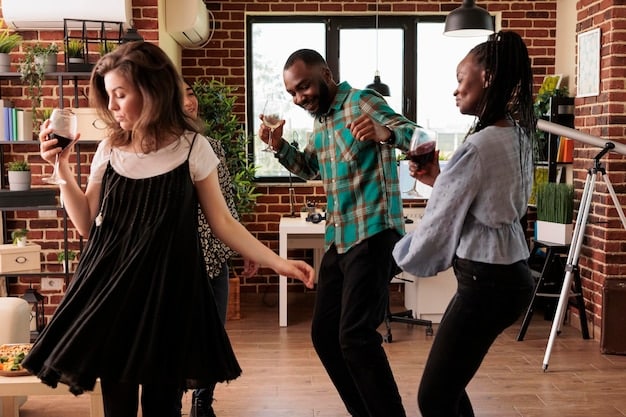
The authenticity and passion of hip hop dancers make them highly trustworthy influencers. When they genuinely believe in a brand or product, their endorsement resonates powerfully with their community. By focusing on creative, narrative-driven content and fostering interactive experiences, hip hop dance crews can transform basic sponsorship deals into impactful, memorable campaigns that benefit both their artistry and their financial bottom line.
Building a Sustainable Future: Diversification and Legacy
While brand partnerships offer a lucrative path for hip hop dance crews, true long-term sustainability involves diversification of income streams and a strategic focus on building a lasting legacy. Relying solely on sponsorships can be precarious, as marketing budgets fluctuate and trends shift. Crews that successfully navigate the professional landscape often employ a multi-faceted approach to revenue generation and community building.
Diversification not only fortifies a crew’s financial standing but also provides artistic freedom, reducing the pressure to accept every brand deal. It allows them to pursue projects for their intrinsic artistic value, as well as their commercial potential. Furthermore, a focus on legacy ensures that their impact extends beyond their active performing years, influencing future generations of dancers and securing their place in hip hop culture.
Expanding Beyond Brand Endorsements
Several avenues exist for crews to diversify their income:
- Merchandise Sales: Creating and selling branded apparel (T-shirts, hoodies, caps) and accessories. Successful merchandise often taps into the crew’s unique aesthetic and appeals to their dedicated fanbase.
- Workshops and Classes: Offering in-person or online dance workshops, masterclasses, and regular classes. This not only generates income but also allows crews to share their knowledge, build community, and identify new talent.
- Performance Bookings: Continuing to accept paid performance gigs for corporate events, music tours, festivals, and televised shows. While brand partnerships might be the primary focus, performance fees contribute significantly.
- Content Monetization (Direct): Beyond ad revenue, exploring paid subscriptions for exclusive content, premium video-on-demand, or direct fan support platforms (e.g., Patreon) where loyal followers contribute financially.
- Choreography Services: Providing choreography services for music videos, commercials, films, or other artists. This leverages their creative expertise in a different professional capacity.
- Grant Funding: Applying for arts grants from foundations, government bodies, or cultural organizations that support dance and cultural initiatives.
Each of these streams adds a layer of financial stability, creating a robust revenue ecosystem that can withstand market fluctuations.
Mentorship and Community Building
A crucial aspect of building a legacy is investing in the next generation. Many established crews take on a mentorship role, guiding aspiring dancers and younger crews. This can involve:
Hosting open training sessions or junior programs. Providing constructive feedback and advice on technique and performance. Sharing insights into the business side of dance. Creating opportunities for emerging talent (e.g., bringing them on tour or featuring them in content).
This cyclical investment strengthens the overall hip hop dance community, ensuring the art form continues to evolve and thrive. It also solidifies the crew’s position as leaders and innovators, contributing to their long-term cultural capital.
Strategic Long-Term Planning
Building a sustainable future also requires strategic long-term planning. This involves:
Financial Planning: Working with financial advisors to manage earnings, plan for taxes, and save for future endeavors or retirement. This is especially critical given the often unpredictable nature of freelance artistic income.
Brand Evolution: Continuously assessing and adapting the crew’s brand identity to remain relevant and fresh. This might involve experimenting with new styles, collaborating with different artists, or exploring new digital platforms as they emerge.
Network Expansion: Consistently nurturing relationships with industry professionals, fellow artists, and potential collaborators. A strong network opens doors to new opportunities and insights.
By consciously diversifying their income, fostering community, and engaging in proactive long-term planning, hip hop dance crews can ensure that their artistic contributions lead to not just immediate financial gain but a rich, enduring legacy within the broader cultural landscape.
Challenges and Overcoming Obstacles
Despite the immense opportunities, the path to sustained financial success for hip hop dance crews is not without its challenges. The journey involves navigating a highly competitive landscape, managing the demands of artistic integrity versus commercial viability, and adapting to a constantly evolving digital environment. Understanding and proactively addressing these obstacles is crucial for long-term survival and growth.
The fluid nature of the entertainment industry means that trends can shift rapidly, and what works today might be obsolete tomorrow. Furthermore, the inherent vulnerabilities of a physically demanding profession require careful planning and resilience. Successfully overcoming these hurdles often distinguishes the enduring crews from those that flicker and fade.
Maintaining Authenticity in Commercial Endeavors
One of the most significant challenges is balancing commercial demands with artistic integrity. Hip hop dance thrives on authenticity and street credibility. Overly commercial partnerships or content that feels inauthentic can alienate a crew’s fanbase and damage their reputation. The key lies in strategic selection of partners and creative integration that truly aligns with the crew’s ethos.
- Saying No: Recognizing when a brand or partnership is not a good fit, even if financially tempting. Compromising artistic vision too much can be detrimental in the long run.
- Creative Control: Negotiating for a degree of creative control in branded content to ensure it reflects the crew’s style and values.
- Transparency: Being transparent with the audience about sponsored content, often through disclosure tags, to maintain trust.
The line between selling out and smart business is often subjective and constantly evaluated by the audience. Crews must walk this line carefully, prioritizing their core identity while seizing opportunities.
Navigating the Competitive Landscape
The accessibility of digital platforms has led to an explosion of talent, making the hip hop dance scene incredibly competitive. Standing out requires more than just exceptional skill; it demands unique branding, consistent high-quality content, and relentless self-promotion. Crews must continuously innovate their style, explore new concepts, and find niches to differentiate themselves.
This also includes understanding the algorithm of platforms and adapting content strategies accordingly. What works on TikTok might not be suitable for YouTube, and vice versa. Staying agile and responsive to platform changes is vital for maintaining visibility and engagement.
Financial Management and Sustainability
Managing finances can be particularly challenging for artists whose income streams are often irregular. While brand partnerships offer significant income, they may not always be consistent. Crews need to learn budgeting, saving, and potentially investing to ensure financial stability during leaner periods. Issues like payroll for numerous members, travel expenses, and production costs can quickly accumulate.
Furthermore, understanding taxes, setting up proper business entities (e.g., LLCs), and managing cash flow are critical aspects that many crews initially overlook. Seeking professional financial advice early on can prevent common pitfalls and lay a solid foundation for sustainable growth.
Physical and Mental Well-being
The demanding nature of hip hop dance, combined with the pressures of touring, content creation, and business management, can take a toll on physical and mental health. Injuries are a constant risk, and burnout is common. Crews must prioritize the well-being of their members by:
Implementing regular rest days and recovery protocols. Ensuring access to proper physical therapy and medical care. Fostering a supportive team environment to address mental health challenges. Balancing work and personal life to prevent exhaustion.
Overcoming these multifaceted challenges—from maintaining artistic integrity to ensuring financial stability and member well-being—requires a combination of strategic planning, adaptability, business acumen, and a deep-seated commitment to the art form and the crew’s collective mission. Those who succeed demonstrate not just exceptional dance skills but also remarkable resilience and foresight.
Future Outlook: The Expanding Horizon for Dance Crews
The trajectory for hip hop dance crews earning substantial income through brand partnerships is unequivocally upward. The confluence of digital media evolution, increasing corporate awareness of niche markets, and the inherent adaptability of hip hop culture suggests an even brighter future. The landscape will likely see further innovation in how crews engage with brands, diversify revenue, and solidify their place as multifaceted entertainment entities.
As the creator economy continues to mature, dance crews are uniquely positioned to capitalize on emerging technologies and evolving advertising models. Their ability to deliver visually captivating, culturally relevant content makes them invaluable assets in an increasingly video-centric digital world. The future isn’t just about more partnerships but about deeper, more integrated, and technologically advanced collaborations.
Emerging Technologies and New Platforms
The advent of new technologies promises to open up even more avenues for monetization and audience engagement:
- Metaverse/VR Collaborations: Opportunities to perform in virtual spaces, create exclusive VR content, or design digital avatars for brands in the metaverse. This offers immersive experiences for fans and unique advertising real estate for companies.
- NFTs and Blockchain: Exploring the creation and sale of NFTs (Non-Fungible Tokens) representing exclusive dance content, behind-the-scenes access, or unique choreographies. This could provide a new layer of direct monetization and fan ownership.
- AI Integration: Utilizing AI tools for content optimization, audience analytics, or even assisting in choreography or visual effects for branded content.
These technologies are not just buzzwords; they represent new frontiers for creative expression and direct financial relationships with fans and brands, bypassing traditional intermediaries.
Increased Specialization and Niche Appeal
As the market grows, crews may find success by further specializing their style or target audience. Instead of being generalist hip hop dancers, crews might focus on specific sub-genres (e.g., breaking, popping, krumping), blend hip hop with other dance forms (e.g., contemporary hip hop, theatrical hip hop), or target very specific demographics (e.g., fashion-forward youth, active lifestyle enthusiasts). This specialization allows them to become highly attractive to particular brands.
This niche appeal can lead to premium partnerships where brands seek out a very specific aesthetic or audience segment that a specialized crew uniquely serves. It fosters deeper, more impactful collaborations rather than broad, less effective ones.
Enhanced Educational and Consulting Offerings
Beyond traditional workshops, successful crews are likely to expand their educational and consulting arms. This could include:
Developing comprehensive online courses in dance technique, performance, or even the business of dance. Offering “consulting” services to brands on how to effectively integrate dance into their marketing campaigns. Leading masterclasses in corporate settings for team building or creative development.
This leverages their expertise in a more structured, scalable way, adding another robust income stream that isn’t dependent on physical performance or direct brand endorsement alone.
The future for hip hop dance crews is bright, offering a landscape where artistic passion can translate into sustainable and significant financial success. By embracing new technologies, specializing their craft, and strategically diversifying their offerings, these pioneering crews are not just breaking barriers; they are actively shaping a new, vibrant economy where dance is recognized not only as an art form but as a powerful, profitable business.
| Key Point | Brief Description |
|---|---|
| 🚀 Digital Reach | Crews leverage platforms like YouTube and TikTok to build vast, engaged audiences, attracting brand attention. |
| 🤝 Strategic Partnerships | Successful crews form genuine collaborations with brands that align with their values and audience. |
| 💰 Diversified Income | Beyond brands, crews generate revenue from merchandise, workshops, and direct content monetization for stability. |
| 📈 Professional Management | Effective business structure and legal guidance are crucial for contract negotiation and IP protection. |
Frequently Asked Questions
▼
Dance crews primarily attract major brands through a combination of large, engaged social media followings, high-quality and consistent content creation, and a unique, authentic brand identity. Brands seek crews whose image aligns with their marketing goals and who can offer genuine reach into specific demographics, especially younger audiences. Professionalism in outreach and content delivery also plays a significant role.
▼
A wide range of brands partner with dance crews, including sportswear companies, fashion labels, beverage brands (especially energy drinks), tech companies (for gadgets or streaming services), automotive brands, and even consumer goods. The key is to find brands whose products or services can naturally integrate into the crew’s dynamic lifestyle or creative content, making the collaboration feel organic rather than forced.
▼
While not strictly necessary for initial small partnerships, securing significant, high-value brand deals often benefits immensely from a professional manager or agent. These representatives have industry connections, expertise in negotiation, and a deep understanding of contract complexities. They enable crews to focus on their art while ensuring optimal terms and protecting their legal and financial interests, leading to higher overall earnings.
▼
Intellectual property (IP) protection is critically important. Choreography, original music, crew names, and logos are valuable assets. Protecting these through copyright and trademark registration safeguards the crew’s creative work from unauthorized use and ensures they can control how their art is monetized. Clear IP clauses in brand contracts are essential to define ownership and usage rights, preventing future disputes and securing long-term revenue streams.
▼
Yes, maintaining artistic authenticity is crucial for long-term success in brand partnerships. Crews achieve this by selectively choosing brands that align with their values and creative style. They often negotiate for creative control over branded content, ensuring it truly reflects their artistic vision. Transparent communication with their audience about sponsorships also helps maintain trust and artistic integrity, reinforcing that the collaborations are genuine extensions of their brand.
Conclusion
The journey of hip hop dance crews from underground artistry to earning upwards of $50,000 annually through brand partnerships is a powerful testament to the evolving dynamics of the entertainment industry and the creator economy. By skillfully leveraging digital platforms, cultivating authentic connections with brands, and embracing sophisticated business practices including robust contract negotiation and intellectual property protection, these crews have redefined what a professional dance career can entail. Their success is not merely a matter of talent but a fusion of artistic innovation with strategic foresight, navigating challenges while consistently seeking new avenues for diversification and growth. As technology advances and brands continue to seek dynamic ways to connect with audiences, the horizon for hip hop dance crews promises continued expansion, solidifying their role not just as cultural custodians but as significant economic forces within the global entertainment landscape.

